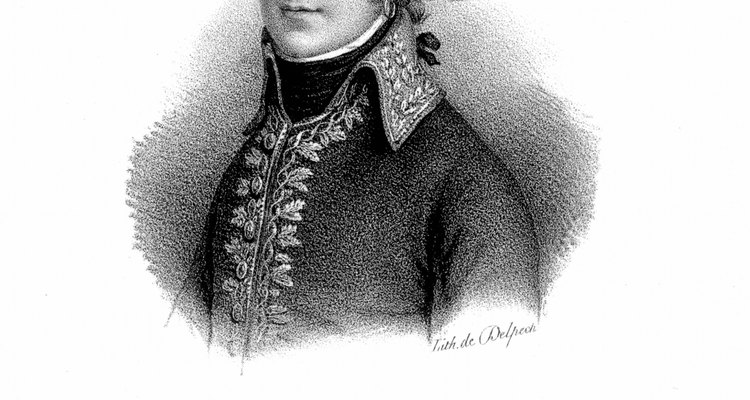
In the 18th century, wigs were a vital part of upper-class men's fashion and were seen as a mark of social standing. According to tradition, the fashion of men wearing wigs originated with Louis XIII, King of France, who wanted to disguise the fact that he had gone prematurely bald. Seventeenth century wigs were large and heavy, but by the middle of the 18th century a smaller wig was the norm.
Materials
In the Colonial period, wigs were made from a range of different materials, from horsehair to goat hair. Light-colored horsehair was prized for its natural color, since light white or off-white wigs were fashionable. The most expensive wigs were made with human hair, which young women sold to barbers once it was long enough to cut short. Cotton or silk served as the inner layer that held the strands together.
Making the Wig
Making a wig was a time-consuming process. Teams of wigmakers worked for days to complete their products. First, the wigmaker spread out a network of ribbons and netting called a caul and formed the inner part of the wig. The caul was secured to a wooden dummy head called a blockhead in order to give it the correct shape. The wigmaker then wove strands of hair together before stitching them in rows to the caul.
Finishing
Once all the hair was attached to the caul, the wigmaker painstakingly curled the rows of hair by wrapping them around curling rods. The hairs were then clipped to the correct length with scissors. Finally, a coat of powder was applied to give the wig its white color, which the wearer would periodically reapply. In addition to white and off-white, powders in other colors such as blue and lilac were also sometimes used.
Use
After the wig was complete and delivered to the customer, the wigmaker's involvement did not end. A wig could last for several years, but it required periodic maintenance. Long-term wear could loosen hair or weaken the wig's curl. Hairdressers, some of whom were also wigmakers, would clean, recurl and trim wigs for their clients, keeping them neat for continued use. The continuing expense for wigs was another reason they were worn mainly by the wealthy or on formal occasions.
Related Articles
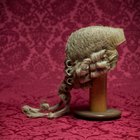
British Wigs in the 1700s

Colonial Wig Making Tools
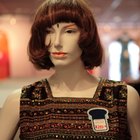
How to Make a Wig on a Sewing Machine

How to Get Rid of Knots in a Wig

Chemical Curls for African Americans

Who Invented Hair Weaves?
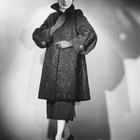
1958 Men's and Women's Dress Styles

Children's Clothes in the 1600s

What Do Women Pirates Wear?

How to Re-Curl a Synthetic Wig

Children's Clothes in 1910

What Is a Capless Wig?

How to Blend a Lace Front Wig

What Did Men Wear During the ...

Traditional Roles of Men & Women in ...

How to Apply Full Lace Wigs

How to Moisturize Dry Hair Caused by ...
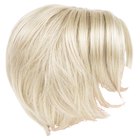
How to Get Glue Residue Off Your Lace ...

The Tools Used for Curling Hair in the ...

How to Remove Hairspray From Wigs
References
Writer Bio
Dr James Holloway has been writing about games, geek culture and whisky since 1995. A former editor of "Archaeological Review from Cambridge," he has also written for Fortean Times, Fantasy Flight Games and The Unspeakable Oath. A graduate of Cambridge University, Holloway runs the blog Gonzo History Gaming.
Photo Credits
Photos.com/Photos.com/Getty Images